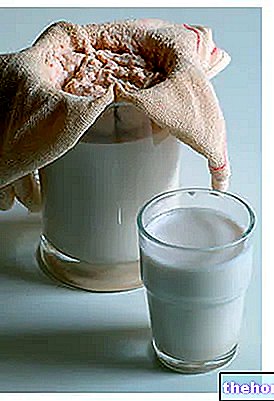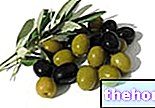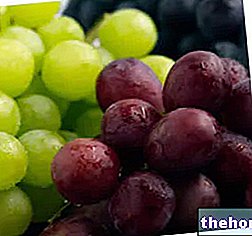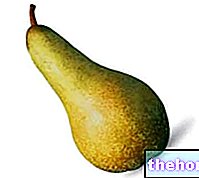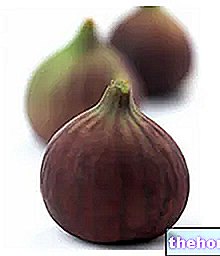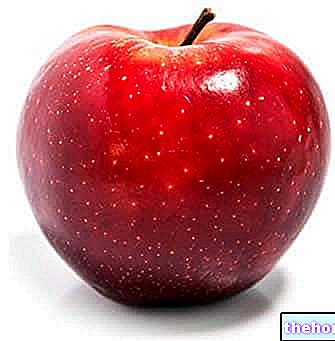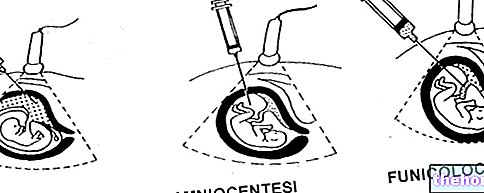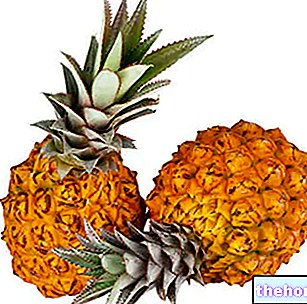Fruit
Fruit is a group of exclusively vegetable foods, typically sugary and consumed mainly raw; in reality, from the botanical point of view it would be more correct to use the term FRUIT and to include in the respective whole also all those vegetables which, due to the lower content of carbohydrates, are preferably used as a side dish: tomatoes, cucumbers, courgettes, aubergines, pumpkins, olives etc.

In any case, fruit represents a VERY important food source, thanks to the high nutritional content of vitamins, mineral salts, soluble fiber, polyphenols, antioxidants in general, fructose and water. Obviously, fruit is not all the same and its composition nutritional value varies mainly based on:
- Botanical variety
- Climate and growth environment
- Cultivation method
- Freshness or conservation
The energy supply of sugary fruit derives mainly from carbohydrates, in particular from fructose, while the lipid and protein content are marginal; on the other hand, some types of fruit are known that have a high lipid content (leaving out the entire category of dried fruit, the best known are coconut and avocado).
Too Much Hurts?
to be honest, I personally do not believe that fruit can be labeled as a group of foods harmful to health, although it is appropriate to make some considerations on this:
- Frequently eating fruit of ambiguous origin is NOT a hygienically correct habit; everyone knows that traditional agriculture makes systematic use of chemicals to guarantee the yield of cultivation. Shopping fruit of national origin, even if not organic, there is (or should have) the guarantee that these chemical agents are TOTALLY metabolized by the fruiting plant and that they do not remain to a significant extent inside the food itself ... but this does not necessarily happen in foreign productions (especially of non-European derivation). Many countries (in addition to using FORBIDDEN pesticides in the European community) do not respect the quantities and timing necessary to restore fruit purity; in this case, frequent consumption of foreign fruit could lead to excessive intake of unwanted contaminants (a classic example is that of bananas). Ultimately, too much contaminated fruit could significantly harm the health of the consumer.
- Several innovative diets (so to speak ...) suggest using fruit and vegetables to reach the minimum amount of carbohydrates in the diet AVOIDING cereals and sometimes even legumes; this principle is based:
- On the reduced ability of fructose to stimulate insulin
- On the organism's need to convert fructose into glucose, a hepatic process that reduces the glycemic index.
Assuming that: if it is true that fructose hardly stimulates insulin, it is equally true that the derived glucose represents in itself an insulin-stimulating factor! Furthermore, by exceeding with the fructose intake a marked hepatic synthesis is observed (similarly to other carbohydrates) of fatty acids aimed at adipose storage.
Ultimately, fruit is a good source of carbohydrates with a low glycemic index and insulin BUT ONLY if introduced in adequate portions (max 300-400g at a time, based on the specific characteristics of the fruit). Last but not least, it has been highlighted by some studies that the EXCESS of fructose can hurt especially dysmetabolic patients (due to an overload of the liver processes) and renal patients (due to a negative impact on the functionality of the already compromised kidneys). . - Let's now tackle the topic of FOOD FIBER and ANTI-NUTRITIONAL MOLECULES; we remind you that fruit has good quantities of dietary fiber and anti-nutritional molecules which, if in excess, can cause nutritional malabsorption. To demonstrate that eating only fruit can determine an excess of dietary fiber, below we will give a brief example:
' ...if it is true that the minimum quantity of carbohydrates to be introduced in the diet (necessary to guarantee the functioning of the nervous system) is equal to 180g / day (LARN sources), and considering that a fruit such as pear (Pyrus communis) provides 9.5g of fructose and 2.8g of fiber per 100g ... to reach at least the recommended 180g, it would be necessary to eat about 1.9kg of pears per day (200g each, for a total of 9.5 per day) which would provide over 50g of overall dietary fiber! A little too much I would say ... considering that the fiber should be introduced in quantities of about 30g / day.
On the contrary, the anti-nutritional molecules present in fruit (as well as in vegetables, especially raw) do not have a minimum recommended ration to follow and logically we would be induced to take as little as possible; paradoxically, among these we also recognize powerful antioxidants, that is polyphenols and tannins, molecules very useful for the organism but which (if in excess inside the intestinal lumen) chelate metals and reduce their bioavailability (eg. iron, important for hemoglobin synthesis); other elements such as oxalates have no nutritional value BUT (always in the intestine) significantly reduce the bioavailability of calcium (important for osteogenesis).
To conclude, even in this respect, eating TOO MANY fruit is absolutely not a good dietary habit.
Other Foods - Fruits Apricots Sour cherries Cashews Pineapple Watermelon Orange Avocado Banana Persimmon Persimmons Apple Chestnuts Cedar Cherries Coconut Watermelon Dates Feijoa Fig of India Figs Strawberries Berries Passion fruit (Maracujà, Granadilla) Jujube Kiwi Raspberries Coconut milk Lemons Almond milk Mango Apples Quinces Pomegranate Melon Blackberries Mustard Medlar Olives Taggiasca Olives Fermented Papaya Pears Peaches Plantains (Cooking Bananas) Pomelo Grapefruit Pink Grapefruit Plums, prunes Fruit juices and fruit juices Grape juice Plums Grapes Sultanas and Raisins OTHER ITEMS FRUIT Categories Food Alcoholics Meat Cereals and derivatives Sweeteners Sweets Offal Fruit Dried fruit Milk and derivatives Legumes Oils and fats Fish and fishery products Salami Spices Vegetables Health recipes Appetizers Bread, Pizza and Brioche First courses Second courses Vegetables and Salads Sweets and Desserts Ice cream and sorbets Syrups, liqueurs and grappas Prepare Basic tions ---- In the kitchen with leftovers Carnival recipes Christmas recipes Light diet recipes Women's, mom's and dad's day recipes Functional recipes International recipes Easter recipes Gluten-free recipes Diabetic recipes Holiday recipes Valentine's Day recipes Vegetarians Protein recipes Regional recipes Vegan recipes
